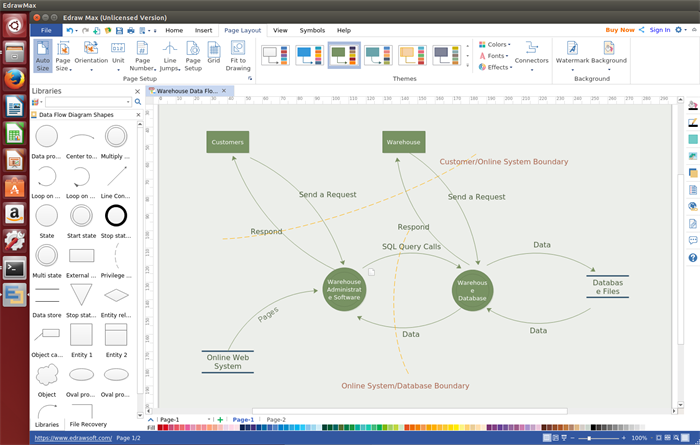
The information flow continuity, that is all the input and the output to each refinement, must maintain the same in order to be able to produce a consistent system.In fact, a DFD node can be a component that never ends. The component sending data can send multiple sets of data along several connections. A component in DFD may not continue execution when sending data and during execution of the component receiving the data. The arrows in DFDs show that there is a flow of data between the two components and not that the component is sending the data that must be executed in the following component. However, there is a significant difference with the data flow diagram. Level 1 DFD must balance with the Level 0 it describes.Ī DFD may look similar to a flow chart.Data stores are first shown at this level.ĭiagram above show an example of Level 1 DFD.In many cases, DFDs are used to create new systems. Input going into a process are different from outputs leaving the process. DFDs can be hand-drawn or, if things get complicated, they can be designed using sophisticated software.Level 0 DFD must balance with the context diagram it describes.They are within the system.ĭiagram above is an example of Context Level DFD 1 bubble (process) represents the entire system.Each level has more information flow and data functional details than the previous level. Do not show any detailed processes or data stores.

The DFD may be used for any level of data abstraction. Create a context diagram that shows external entities and data flows to and from the system. This type of diagram helps business development and design teams visualize how data is processed and identify or improve certain aspects.ĭFDs only involve four symbols. Branching, whether relating to data or to conditional decision-making, might appear on a flow chart but would not appear on a DFD. Individuals seeking to draft a data flow diagram must (1) identify external inputs and outputs, (2) determine how the inputs and outputs relate to each other, and (3) explain with graphics how these connections relate and what they result in. As its name indicates its focus is on the flow of information, where data comes from, where it goes and how it gets stored.

A data flow diagram (DFD) illustrates how data is processed by a system in terms of inputs and outputs.


 0 kommentar(er)
0 kommentar(er)
